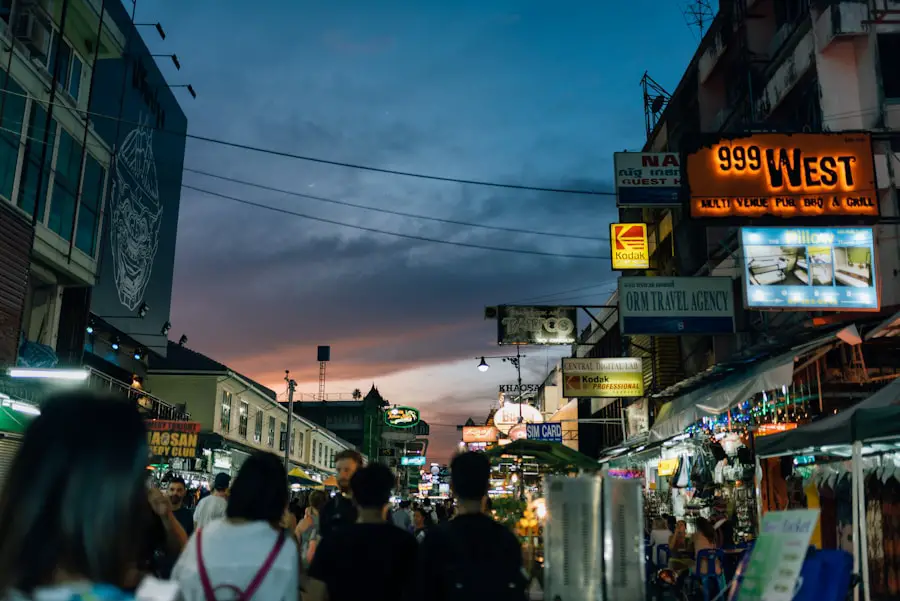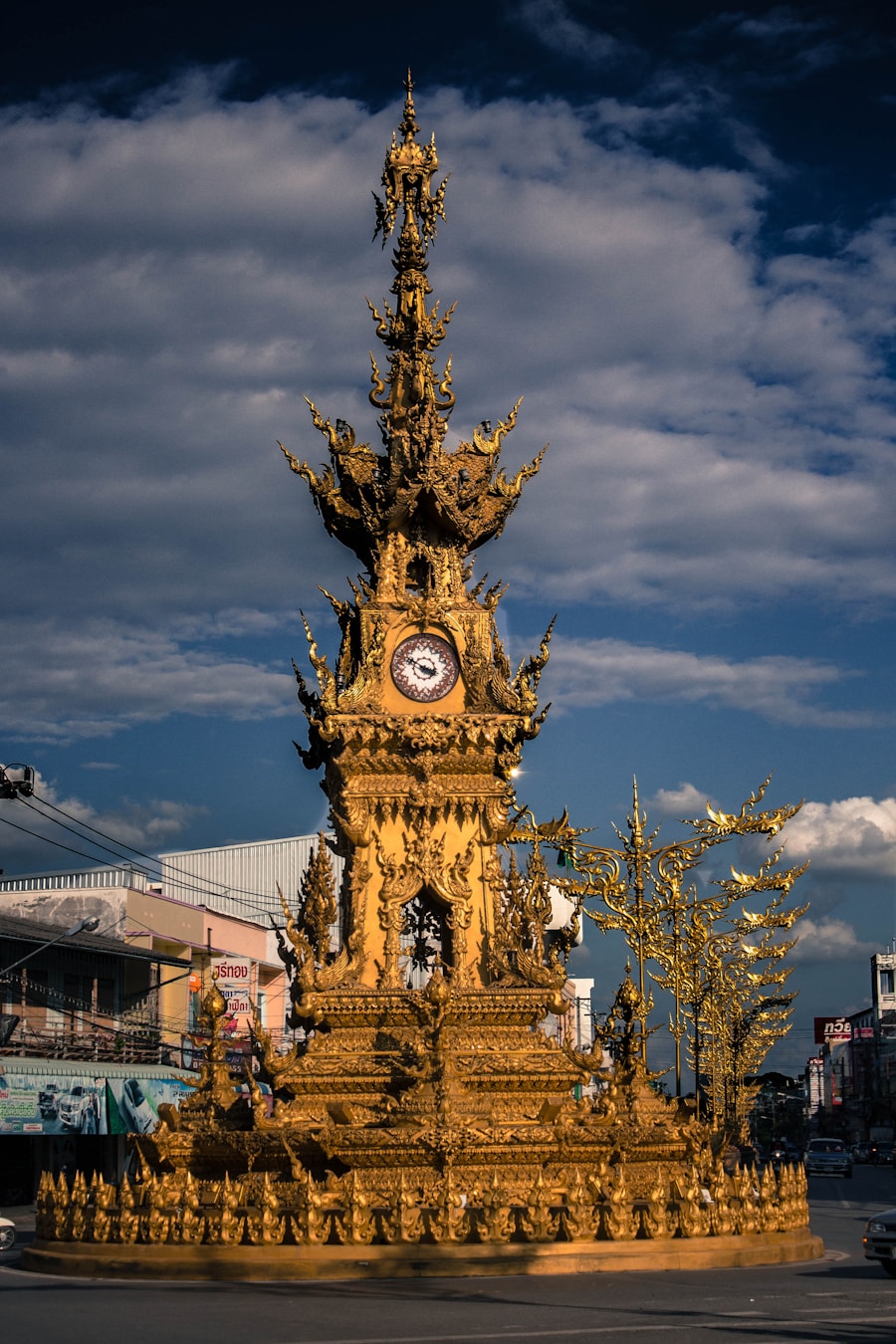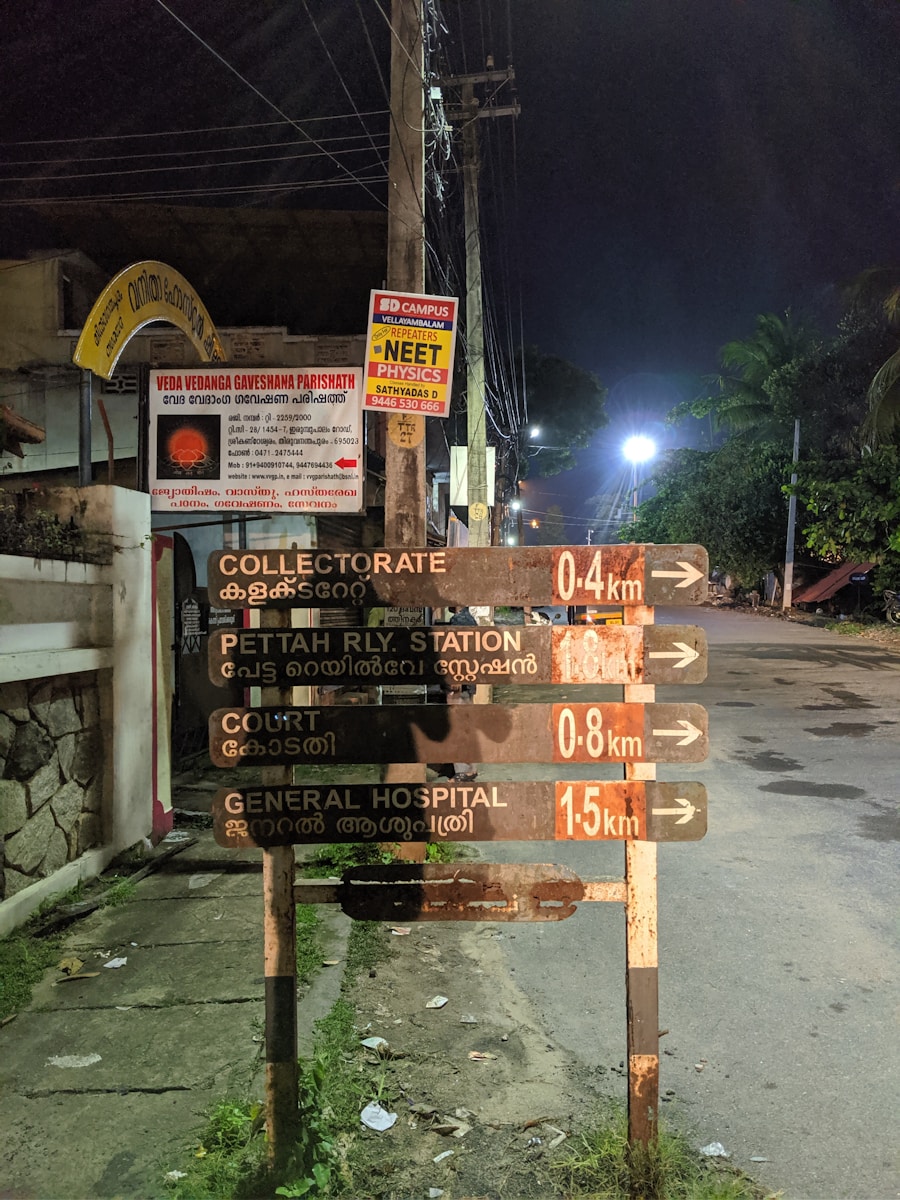Bangkok, the vibrant capital of Thailand, is renowned for its rich cultural heritage, bustling street life, and mouthwatering cuisine. However, one of the most significant factors that can influence a visitor’s experience is the city’s climate. Situated in a tropical savanna zone, Bangkok experiences a distinct wet and dry season, characterized by high humidity and temperatures that can soar throughout the year.
The average temperature typically hovers around 30°C (86°F), but it can feel much hotter due to the humidity levels that often exceed 80%. The climate in Bangkok is primarily influenced by the monsoon winds, which bring heavy rains during the wet season from May to October. This period is marked by intense downpours, particularly in September and October, which can lead to flooding in certain areas.
Conversely, the dry season, which runs from November to April, offers more pleasant weather conditions, making it an ideal time for tourists to explore the city. Understanding these climatic patterns is essential for travelers looking to make the most of their visit to this bustling metropolis.
Key Takeaways
- Bangkok has a tropical monsoon climate with three distinct seasons: hot, rainy, and cool.
- The peak tourist season in Bangkok is from November to February when the weather is cooler and drier.
- The best time to visit Bangkok for outdoor activities is during the cool season from November to February when the weather is more comfortable for exploring the city.
- The off-peak season in Bangkok is during the hot and rainy seasons from March to October, when the weather can be hot and humid with frequent rain showers.
- When traveling to Bangkok, it’s important to consider the weather and pack accordingly, including lightweight and breathable clothing, an umbrella, and sunscreen.
- Bangkok hosts special events and festivals throughout the year, including Songkran (Thai New Year) in April and Loy Krathong in November, offering unique cultural experiences for visitors.
- Tips for traveling during the different seasons in Bangkok include staying hydrated, using sunscreen, and planning indoor activities during the hot and rainy seasons.
- In conclusion, the best time to travel to Bangkok is during the cool season from November to February, when the weather is more comfortable for outdoor activities and sightseeing.
Peak tourist season in Bangkok
Weather Conditions
The dry season brings with it a welcome respite from the heat and humidity, making it perfect for exploring the city’s many attractions. With average temperatures ranging from 20-25°C (68-77°F), visitors can comfortably navigate the city’s bustling streets and take in the sights without the burden of sweltering heat.
Festivals and Celebrations
In addition to the pleasant weather, this peak season also aligns with several major holidays and festivals, further enhancing the appeal of visiting Bangkok during these months. The city comes alive with various events, including the famous Loy Krathong festival, where locals and tourists alike release floating lanterns into the waterways as a symbol of letting go of negativity and welcoming good fortune.
A Prime Time for Cultural Exploration
The festive atmosphere during this time adds an extra layer of excitement for visitors, making it a prime time to explore the city’s rich traditions and cultural offerings. With the city’s vibrant culture and historical landmarks on full display, visitors can experience the best of Bangkok during this peak season.
Best time to visit Bangkok for outdoor activities

For those interested in outdoor activities, the best time to visit Bangkok is undoubtedly during the dry season from November to February. The cooler temperatures and lower humidity levels create a more comfortable environment for exploring the city’s many parks, markets, and outdoor attractions. Popular spots such as Lumpini Park offer a serene escape from the urban hustle and bustle, where visitors can enjoy leisurely strolls, picnics, or even join locals in tai chi sessions.
Moreover, this period is perfect for engaging in various outdoor adventures beyond the city limits. Day trips to nearby destinations like Ayutthaya or Kanchanaburi are particularly enjoyable during these months, as travelers can explore ancient ruins or natural wonders without the discomfort of oppressive heat. Activities such as cycling tours along the Chao Phraya River or visiting floating markets become more appealing when temperatures are milder, allowing visitors to fully immerse themselves in the local culture and scenery.
Off-peak season in Bangkok
| Metrics | Off-peak Season in Bangkok |
|---|---|
| Hotel Occupancy Rate | 40% |
| Tourist Arrivals | Decrease by 30% |
| Average Temperature | Around 28°C |
| Rainfall | Low precipitation |
The off-peak season in Bangkok generally occurs from May to October when the city experiences its wet season. During these months, rainfall is frequent and can be heavy at times, leading to potential disruptions in travel plans. However, this period also presents unique opportunities for travelers willing to brave the elements.
Fewer tourists mean that popular attractions are less crowded, allowing for a more intimate experience with Bangkok’s rich history and culture. Traveling during the off-peak season can also result in significant cost savings. Accommodation prices tend to drop as hotels and guesthouses seek to attract visitors during this quieter time.
Additionally, many restaurants and shops offer discounts or promotions to entice customers. For those who are flexible with their travel plans and do not mind occasional rain showers, visiting Bangkok during the off-peak season can provide a more authentic experience of the city while enjoying lower prices.
Weather considerations for traveling to Bangkok
When planning a trip to Bangkok, it is crucial to consider the weather conditions that may impact your travel experience. The city’s tropical climate means that temperatures can be high year-round, but they are particularly intense during the hot season from March to May. During these months, temperatures can reach up to 40°C (104°F), making outdoor activities challenging without proper precautions.
Travelers should be prepared with lightweight clothing, sunscreen, and plenty of water to stay hydrated. In contrast, during the wet season from May to October, visitors should be ready for sudden downpours that can occur at any time of day. While rain may provide temporary relief from the heat, it can also lead to flooding in certain areas of the city.
Travelers should consider carrying an umbrella or raincoat and plan indoor activities as alternatives on particularly rainy days. Understanding these weather patterns will help travelers make informed decisions about their itineraries and ensure a more enjoyable experience in Bangkok.
Special events and festivals in Bangkok

Songkran: The Thai New Year Festival
One of the most significant celebrations is Songkran, the Thai New Year festival held in mid-April. This event is famous for its water fights, where locals and tourists alike take to the streets armed with water guns and buckets to splash water on each other as a symbol of cleansing and renewal.
A Festival of Lights: Loy Krathong
Another notable event is Loy Krathong, celebrated on the full moon of the 12th month in the Thai lunar calendar, usually falling in November. During this enchanting festival, people create beautiful krathongs—small floating baskets made from banana leaves—and release them into rivers and canals as a way of paying respect to the water spirits.
Immersing in Thai Culture
Participating in these festivals not only provides insight into Thai culture but also allows travelers to engage with locals in a meaningful way.
Tips for traveling during the different seasons in Bangkok
Traveling during different seasons in Bangkok requires some strategic planning to ensure a smooth experience. For those visiting during peak season from November to February, it is advisable to book accommodations and popular attractions well in advance due to high demand. Early reservations can help secure better rates and availability at sought-after hotels or tours.
Additionally, travelers should consider starting their days early to avoid crowds at major sites like the Grand Palace or Wat Pho. During the off-peak season from May to October, flexibility becomes key.
Travelers should keep an eye on weather forecasts and be prepared for sudden changes in conditions. Packing lightweight clothing that dries quickly can be beneficial for navigating unexpected rain showers while still staying comfortable. For those who plan to visit during transitional months like March or October when weather patterns can be unpredictable, layering clothing is advisable.
Mornings may start cool but can quickly heat up by midday; thus, wearing breathable fabrics that can be easily adjusted will enhance comfort throughout the day.
Choosing the best time to travel to Bangkok
Selecting the best time to travel to Bangkok ultimately depends on individual preferences and priorities. For those seeking pleasant weather and vibrant cultural experiences, visiting during peak season from November to February is ideal. However, travelers looking for budget-friendly options or a more authentic experience may find that exploring during the off-peak season offers unique advantages despite potential weather challenges.
Regardless of when one chooses to visit Bangkok, understanding its climate patterns and cultural events will enhance any travel experience. By planning ahead and being adaptable to changing conditions, visitors can fully immerse themselves in all that this dynamic city has to offer while creating lasting memories amidst its bustling streets and rich traditions.
When planning your trip to Bangkok, it’s important to consider the best time to visit this vibrant city. According to a recent article on TakeTravelInfo, the ideal time to travel to Bangkok is during the cool season from November to February when the weather is more comfortable for exploring the city’s attractions. Be sure to pack your best travel pants with hidden pockets for convenience while sightseeing in this bustling metropolis.
FAQs
What is the best time to travel to Bangkok?
The best time to travel to Bangkok is during the cool and dry season, which typically runs from November to February. This is when the weather is most pleasant, with lower humidity and cooler temperatures.
What is the weather like in Bangkok during the best time to travel?
During the cool and dry season, the weather in Bangkok is generally sunny with temperatures ranging from 25°C to 30°C. There is little to no rainfall during this time, making it ideal for outdoor activities and sightseeing.
Are there any festivals or events during the best time to travel to Bangkok?
Yes, there are several festivals and events that take place in Bangkok during the cool and dry season, including the famous Loy Krathong festival in November and the New Year celebrations in December. These events offer a unique cultural experience for travelers.
What are the tourist crowds like during the best time to travel to Bangkok?
The cool and dry season is a popular time for tourists to visit Bangkok, so it can be quite crowded at popular attractions and tourist hotspots. It’s advisable to book accommodations and tours in advance to avoid any inconvenience.
Are there any downsides to traveling to Bangkok during the best time?
While the cool and dry season is generally the best time to visit Bangkok, it is also the peak tourist season, which means higher prices for accommodations and attractions. Additionally, some popular attractions may be more crowded than usual.
